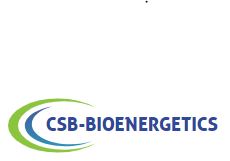Idexx Lab Animal Serum
Freezing Medium (Serum-free & animal origin-free) |
|||
| PB180438-100mL | Elabscience Biotech | 100 mL | EUR 118 |
|
Description: Supplements & Reagents |
|||
Animal Serum Laboratories manufactures the idexx lab animal serum reagents distributed by Genprice. The Idexx Lab Animal Serum reagent is RUO (Research Use Only) to test human serum or cell culture lab samples. To purchase these products, for the MSDS, Data Sheet, protocol, storage conditions/temperature or for the concentration, please contact Animal Serum. Other Idexx products are available in stock. Specificity: Idexx Category: Lab Group: Animal Serum
Horse Serum |
||
| Abbexa | 100 ml | EUR 410.4 |
Mouse Serum |
||
| Abbexa | 100 L | EUR 155407.2 |
Mouse Serum |
||
| Abbexa |
|
|
Mouse Serum |
||
| Abbexa | 5 L | EUR 10599.6 |
Mouse Serum |
||
| Abbexa | 1 ml | EUR 2064 |
Porcine Serum |
||
| Abbexa | 1 L | EUR 710.4 |
Rabbit Serum |
||
| Abbexa | 100 ml | EUR 326.4 |
Animal Tissue PCR Kit |
|||
| 20-abx09801120ulSystems | Abbexa |
|
|
IWP-2, Animal-Free |
|||
| 18175-64 | NACALAI TESQUE | 5MG | EUR 133 |
Animal Tissue PCR Kit |
|||
| abx098011-100l | Abbexa | 100 µl | EUR 400 |
Animal Tissue PCR Kit |
|||
| abx098011-1ml | Abbexa | 1 ml | Ask for price |
Animal Tissue PCR Kit |
|||
| abx098011-200l | Abbexa | 200 µl | EUR 1050 |
Animal Genomic DNA Kit |
|||
| abx294005-100preps | Abbexa | 100 preps | EUR 627.6 |
Animal Genomic DNA Kit |
|||
| abx294005-50preps | Abbexa | 50 preps | EUR 477.6 |
Animal Genomic DNA Kit |
|||
| abx294005-100g | Abbexa | 100 µg | Ask for price |
Animal Genomic DNA Kit |
|||
| abx294005-20g | Abbexa | 20 µg | EUR 312.5 |
Animal Genomic DNA Kit |
|||
| abx294005-50g | Abbexa | 50 µg | EUR 725 |
Y-27632, Animal-Free |
|||
| 18188-04 | NACALAI TESQUE | 10MG | EUR 525 |
SOY PEPTONE, ANIMAL FREE |
|||
| S19-140-10kg | Alphabiosciences | 10 kg | Ask for price |
SOY PEPTONE, ANIMAL FREE |
|||
| S19-140-2kg | Alphabiosciences | 2kg | Ask for price |
SOY PEPTONE, ANIMAL FREE |
|||
| S19-140-500g | Alphabiosciences | 500 g | Ask for price |
L(-)-Proline, Animal-Free |
|||
| 13040-22 | NACALAI TESQUE | 25G | EUR 49 |
L-Serine, Animal-Free |
|||
| 13041-12 | NACALAI TESQUE | 25G | EUR 60.2 |
L-Valine, Animal-Free |
|||
| 13046-62 | NACALAI TESQUE | 25G | EUR 50.4 |
